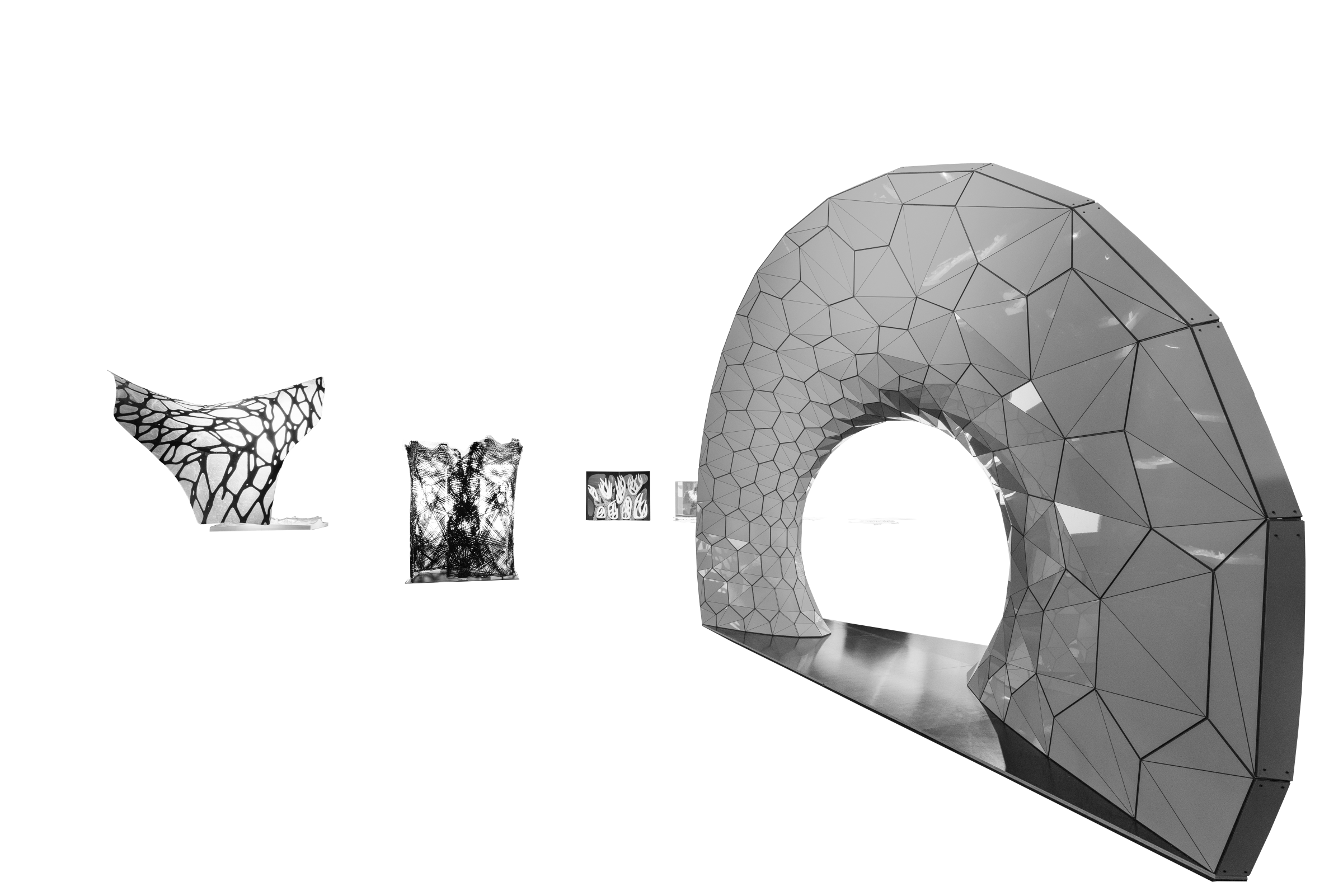Triin Ojari
architectural historian, director of the Museum of Estonian Architecture
“Fibre composite materials, carbon fibre, biodegradable plastic, polyurethane foam, hot melt adhesive, polylactic acid, polycaprolactone, CNC milling, Stratasys, algorithm – this year’s Tallinn Architecture Biennale TAB walked in the outermost periphery trying to find its way towards the future in the morass of the most complicated vocabulary of robotics and material technology. Its way to the “self-driven city”, as the name suggested. Just as every search includes more trials than ready-made solutions, also the discussion of the latest architecture requires that we forget all prejudice, appreciate the experimental spirit driving the labs and admire the prototypes in constant change or observe the work with datasets and the fine-tuned parameters of 3D models that only computers can conduct.
The nine objects of “Body Building” spotlighted in the dim hall of Soolaladu are not frightening or global (yet). They are not beautiful sculptures or colourful models of buildings, although, as we know from the history of modern art, bringing them into an exhibition hall automatically changes the context of the exhibits, redefining them and changing our perspective. They are extracts from a much longer text, a complicated printing and prototyping process where the author has been reduced to a data entry clerk and dissolved into the motley crew of engineers, programmers and researchers. A kind of architecture of geeks.”
“Arhitektid, nohikud ja masinad”, Daily newspaper Postimees, 02.10.2015
Artur Staškevitš
architect
“I must admit that I am still surprised to read or hear in the media coverage, in the discussions concerning the exhibitions and even in the speeches and conversations at the opening comments about the outlandish qualities, oddity, avantgarde and testing the boundaries. It seems as if the visitors are warned or prepared for some extraordinary experience. However, the self-same people are wearing shoes made using the flyknit technology, listen to and get inspiration from modular generative music and enthuse about complex hybrid natural-artificial environments with almost deconstructive and flowing forms. In other words, they wear Nike trainers, listen to techno music and enjoy the forest. The same people form a generation that can easily abstract and interpret vast amounts of data with no need for a simplified space. We can only wonder that as our daily life is so highly developed, why should the attitude to architecture be still so conservative. The people experiencing architecture should not be underestimated.”
“Analoog-digitaalne näitus „Keha ehitus“”. Cultural weekly Sirp 02.10.2015






